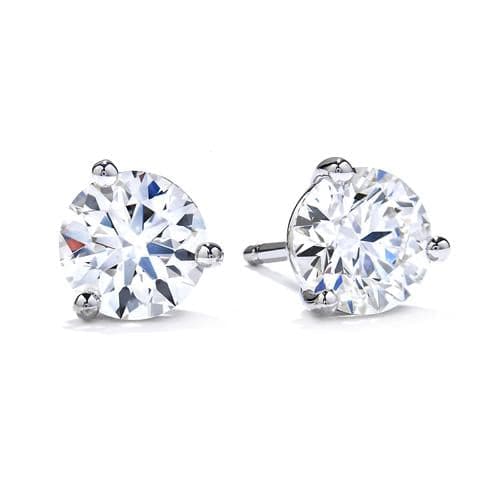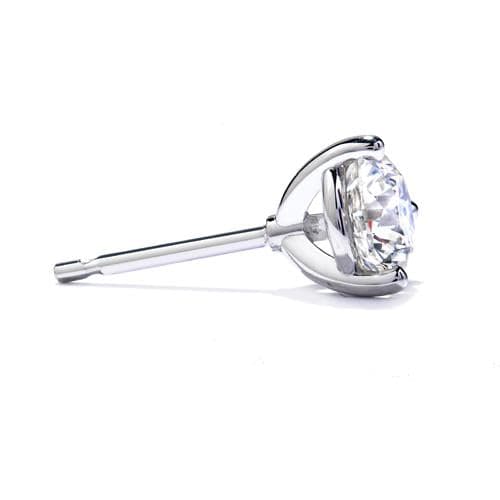Your wedding ring is one of the most treasured pieces of jewelry you’ll ever own. It symbolizes love, commitment, and the bond you share with your partner. But over time, changes in your finger size due to weight fluctuations, pregnancy, or other factors can affect how your wedding ring fits.
At Springer’s Jewelers, we specialize in resizing all types of rings, from simple bands to intricate designs. In this blog, we’ll dive deeper into the different methods for resizing your wedding ring, step-by-step, and take a quick look at the history of resizing, showing how this craftsmanship has evolved over time.
The Evolution of Metal Resizing Techniques
Metal resizing has come a long way from ancient methods that relied on basic techniques like annealing (heating and stretching metal) and cold working (hammering to compress). These early processes were labor-intensive and often resulted in uneven metal thickness or weakened structures, which compromised the durability of the resized piece.
Modern Resizing Methods
Today, jewelers use highly advanced tools that offer precision and control, allowing for seamless resizing without compromising the jewelry’s integrity.
- Rolling Mills & Hydraulic Presses: These tools apply even pressure across the metal, ensuring uniform stretching or compressing, while maintaining the original thickness and strength of the ring or piece.
- Laser Cutting & Soldering: Jewelers use laser technology for precise cuts and re-soldering to ensure that adjustments are virtually invisible, keeping the jewelry's appearance flawless.
- CAD & 3D Printing: With computer-aided design (CAD) and 3D printing, jewelers can model jewelry digitally, ensuring precision before any physical adjustments are made. This guarantees a perfect fit and preserves intricate designs.
Benefits at Springer’s Jewelers
At Springer’s Jewelers, we leverage these advanced techniques to provide our clients with the highest level of craftsmanship. Our process offers several key benefits:
- Unmatched Precision: We can resize even the most intricate and delicate pieces, preserving both the design and structure.
- Seamless Resizing: Modern techniques allow for invisible cuts, ensuring that resized pieces look as perfect as the original.
- Guaranteed Structural Integrity: With today’s advanced tools, resizing no longer weakens the metal, maintaining its strength and durability for daily wear.
- Versatility: Our methods allow us to work with various metals, from classic gold and platinum to modern materials like titanium and stainless steel.
The Methods of Resizing a Wedding Ring
Depending on whether your ring needs to be made larger or smaller, there are different methods jewelers use to resize wedding rings. Each method requires specific tools, and the process can vary depending on the ring’s material, design, and gemstones.
1. Making the Ring Smaller
If your wedding ring has become too loose, the jeweler can resize it to fit snugly by removing a small portion of the metal. Here's a step-by-step look at how this method works:
Step-by-Step:
- Cutting the Band: The jeweler first makes a precise cut on the ring’s band to open it up.
- Removing Excess Metal: A small section of the band is carefully removed to reduce the size.
- Re-Soldering the Band: After the excess metal is removed, the jeweler re-solders the band together, ensuring a seamless connection.
- Smoothing and Polishing: Once the ring has been resized, the jeweler polishes and buffs the band, making the soldering line invisible and restoring the ring’s original shine.
Advantages:
- Works well for most types of rings.
- Preserves the overall design and look of the ring.
- Ideal for plain bands or rings with minimal designs.
2. Making the Ring Larger
If your wedding ring feels too tight, the jeweler can enlarge it using one of two techniques—either by stretching the band or by adding metal.
Stretching the Ring
Best For:
- Plain metal bands without intricate designs or gemstones. This method is suitable for slight size increases (up to half a size). The jeweler uses special tools to gently stretch the band to enlarge the ring.
Step-by-Step:
- Assessing the Ring: The jeweler ensures that the ring's material can be safely stretched.
- Stretching the Band: Using specialized equipment, the jeweler carefully stretches the ring, applying pressure to widen the band without damaging it.
- Polishing: Once the desired size is achieved, the ring is polished to restore its luster.
Advantages:
- Quick and straightforward.
- No cuts or additions needed.
- Ideal for slight size adjustments.
Adding Extra Metal
Best For:
- Rings requiring a more significant size increase (more than half a size). For larger size adjustments, the jeweler will add extra metal to the band.
Step-by-Step:
- Cutting the Band: The jeweler makes a precise cut to open up the band.
- Inserting Extra Metal: A piece of metal, matching the ring’s original material, is inserted to widen the ring.
- Soldering the Band: The new piece of metal is soldered to the ring, ensuring a seamless connection.
- Shaping and Polishing: The ring is reshaped, smoothed, and polished to blend the new metal perfectly with the original band.
Advantages:
- Allows for significant size increases.
- Maintains the ring's integrity and strength.
- Ideal for rings that need to be increased by more than one full size.
Using Sizing Beads or Ring Guards
If resizing a ring by cutting or adding metal isn't the best option—due to design constraints or personal preference—jewelers can use sizing beads or ring guards to adjust the fit.
Sizing Beads
Sizing beads are small metal balls that are soldered inside the ring to create a snug fit. This method works well when only a slight adjustment is needed.
Step-by-Step:
- Placing Beads: The jeweler places two small beads on the inside of the band, typically at opposite sides.
- Soldering Beads: The beads are securely soldered to the band.
- Polishing: The beads are polished to ensure comfort and a smooth finish.
Advantages:
- Great for rings that spin or are slightly loose.
- Less invasive than traditional resizing.
- Beads can be easily removed or adjusted later.
Ring Guards or Inserts
A ring guard or insert is a removable metal band that fits inside the ring, making it tighter without permanently altering the band.
Step-by-Step:
- Selecting the Guard: The jeweler selects an appropriately sized ring guard.
- Inserting the Guard: The guard is placed inside the band, reducing the ring's size for a snugger fit.
Advantages:
- Ideal for those who don’t want to alter the original ring.
- A temporary solution for fluctuating finger sizes.
- Can be removed if the original size is needed again.
Special Considerations for Unique Rings
Rings with gemstones, intricate engravings, or alternative metals require extra care during resizing. Here are some key considerations when resizing unique rings:
- Gemstone Rings: Rings with stones around the band, such as pavé settings, need special care to ensure the stones remain securely in place during and after resizing.
- Engraved or Patterned Rings: Resizing rings with continuous patterns or engravings can alter the design. In such cases, the jeweler may need to adjust the resizing technique to avoid distorting the design.
- Alternative Metals: Rings made of tungsten, titanium, or other harder metals are often more difficult—or even impossible—to resize. In these cases, alternatives like sizing beads or ring guards may be recommended.
Conclusion
Resizing a wedding ring requires both skill and precision, especially when dealing with unique designs or intricate details. Whether you need a minor adjustment or a more complex resizing, the experts at Springer’s Jewelers can guide you through the process, ensuring your ring fits perfectly without compromising its beauty or structure.
With over 150 years of experience, we pride ourselves on our craftsmanship and dedication to customer satisfaction. Visit us at one of our coastal New England locations or schedule an appointment online to explore your ring resizing options. Let us help you ensure your wedding ring remains a symbol of love and commitment for years to come.







